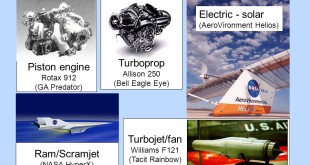Introduction In an era marked by increasing environmental concerns and the need for sustainable solutions, the automotive industry is undergoing a significant transformation. One of the key advancements driving this change is hybrid propulsion technology. Hybrid vehicles combine the benefits of both internal combustion engines (ICE) and electric motors, offering …
Read More »Powering Up the Military: The Importance, Technology, Applications, and Market of Power Generators
The military is one of the largest consumers of energy in the world, requiring a constant and reliable source of power to operate its various weapons systems, communication networks, and other equipment. Power generators have become an essential component of modern military operations, providing a portable and flexible source of …
Read More »Exploring the Potential of Seawater: Generating Electricity from an Abundant Resource
The world’s population is growing at an unprecedented rate, and with it, the demand for electricity is increasing. Currently, most of the electricity we use is generated from non-renewable sources like coal, oil, and natural gas. These sources are not only finite but also have a significant impact on the …
Read More »Revolutionizing Space Launch: Exploring the Technology, Trends, and Market for Liquid Propellant Rocket Engines
A rocket can be an aircraft, spacecraft, missile, or vehicle which generates thrust. Spacecraft themselves then use their own propulsion systems to adjust their orbits around Earth, travel through space, or make carefully controlled landings on the surfaces of other planets. Thrust is generated by the propulsion system of the …
Read More »DARPA MiniTherms3D Program: Advancing Military Systems with Innovative Thermal Management Solutions
Introduction In the fast-paced world of military technology, high-performance systems with size, weight, and power (SWaP) constraints pose unique challenges. One critical aspect that often demands innovative solutions is thermal management. With the advancement of cutting-edge military applications, such as artificial intelligence, sensor networks, and autonomous vehicles, the need for …
Read More »Quantum Propulsion: Revolutionizing Interplanetary Space Propulsion with Light-Thrust Engines
Introduction The dream of exploring the cosmos beyond our solar system has captivated the imagination of scientists, visionaries, and space enthusiasts for decades. However, the vast distances and limitations of traditional rocket propulsion have posed significant challenges to interstellar travel. Enter quantum propulsion and its revolutionary concept of light-thrust engines, …
Read More »Wireless Power Unleashed: DARPA’s Whisper Beam for UAV Swarm Operations
Introduction In recent years, Unmanned Aerial Vehicles (UAVs), commonly known as drones, have rapidly evolved from niche technology to indispensable tools for various industries and military applications. However, one of the most significant challenges for UAVs has always been their limited flight time due to onboard battery constraints. To overcome …
Read More »Ensuring Energy Security in a Rapidly Evolving Energy Industry: Challenges and Solutions
Energy is essential to modern society, as it powers our homes, industries, and transportation systems. Without energy, we would not be able to sustain our current standard of living, and many of the technologies and conveniences that we take for granted would not exist. The importance of energy will only …
Read More »UAV Propulsion Technologies: Fueling Long-Endurance Commercial and Military Missions
Introduction Unmanned aerial vehicles (UAVs) have evolved from hobbyist toys to critical tools with applications spanning across various industries. As the demand for UAVs with extended flight endurance continues to grow, propulsion system technologies have risen to the challenge. This blog article explores how cutting-edge UAV propulsion systems are enabling …
Read More »Super Capacitors: Powering Innovations from Electric Transport to Military Directed Energy Weapons
Introduction: In the world of energy storage, supercapacitors have emerged as a game-changing technology. With their unique properties and capabilities, they are revolutionizing diverse sectors, ranging from electric transport to military applications like directed energy weapons. In this blog article, we will explore how supercapacitors are fueling innovations in these …
Read More » International Defense Security & Technology Your trusted Source for News, Research and Analysis
International Defense Security & Technology Your trusted Source for News, Research and Analysis



